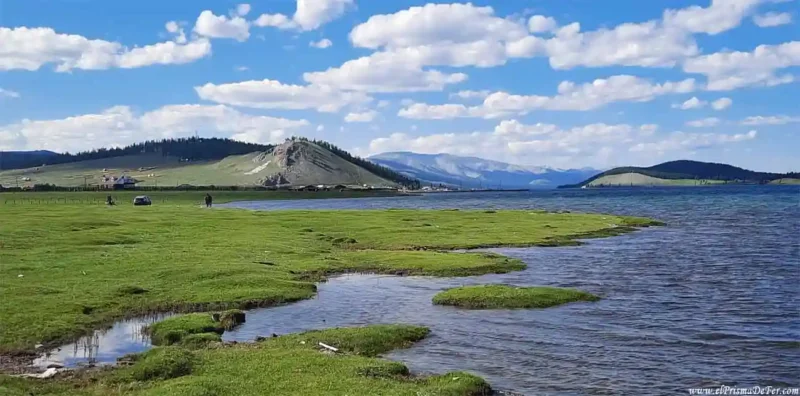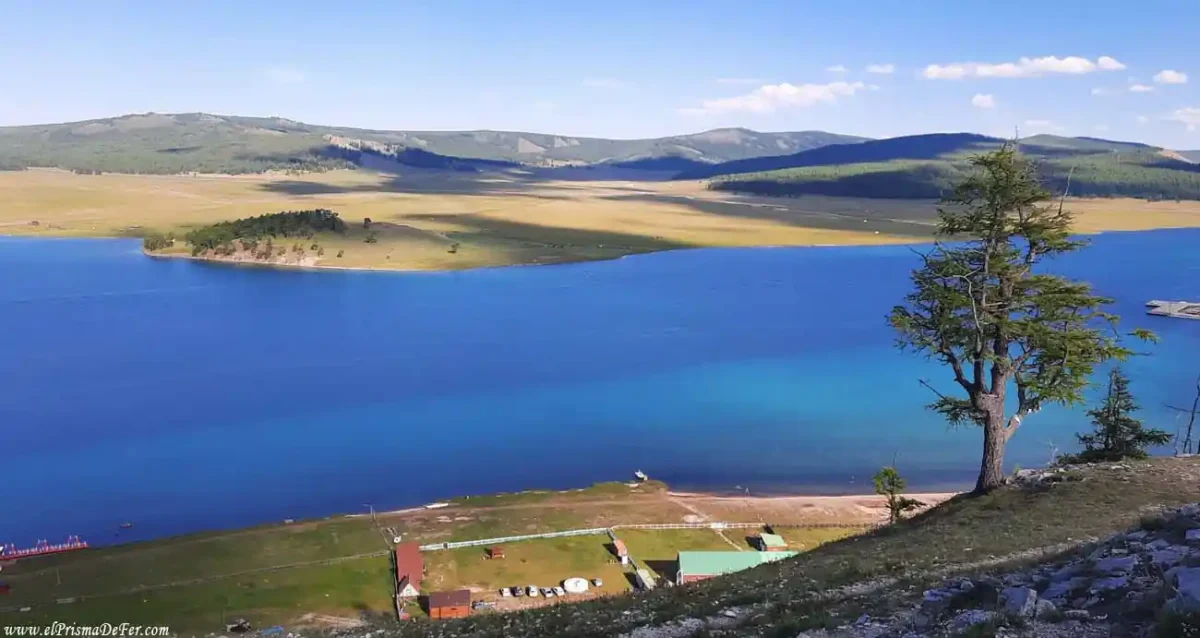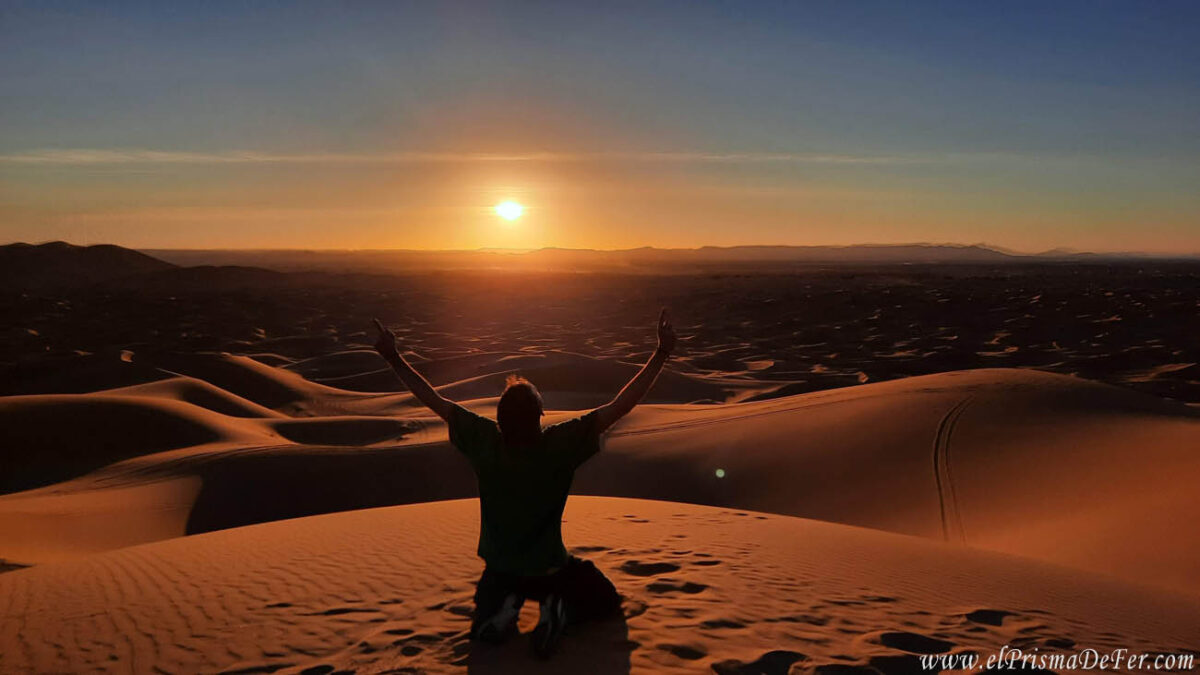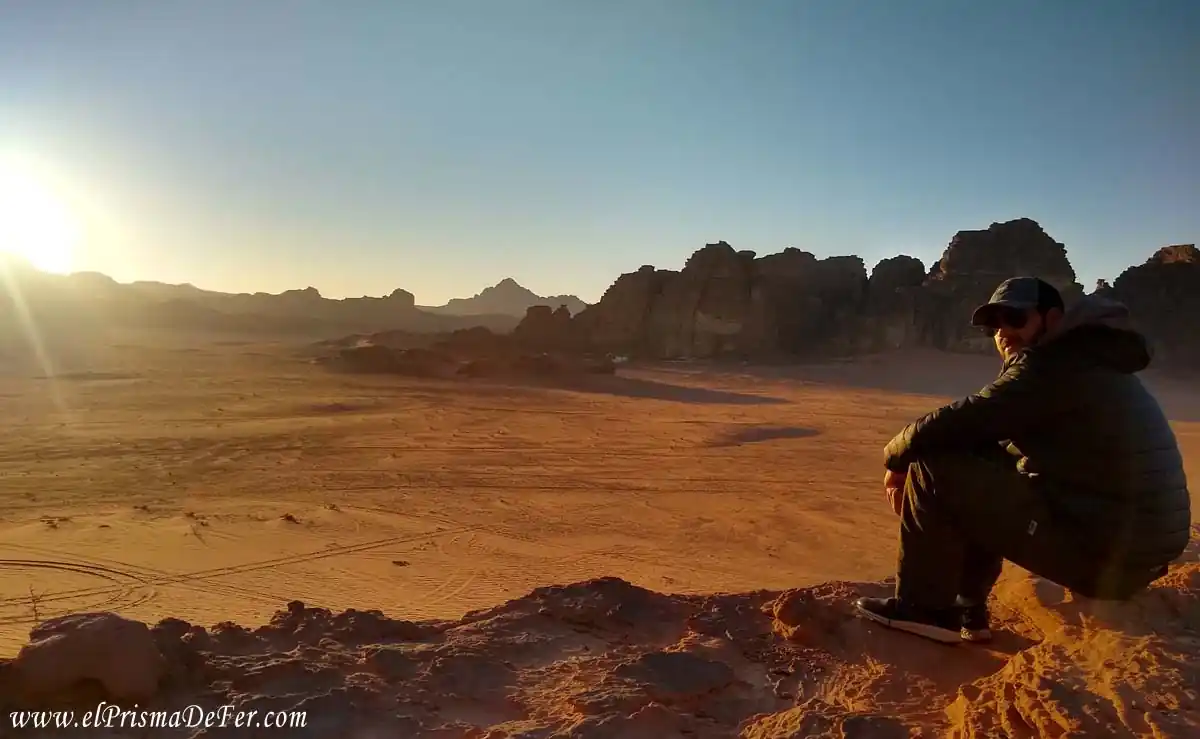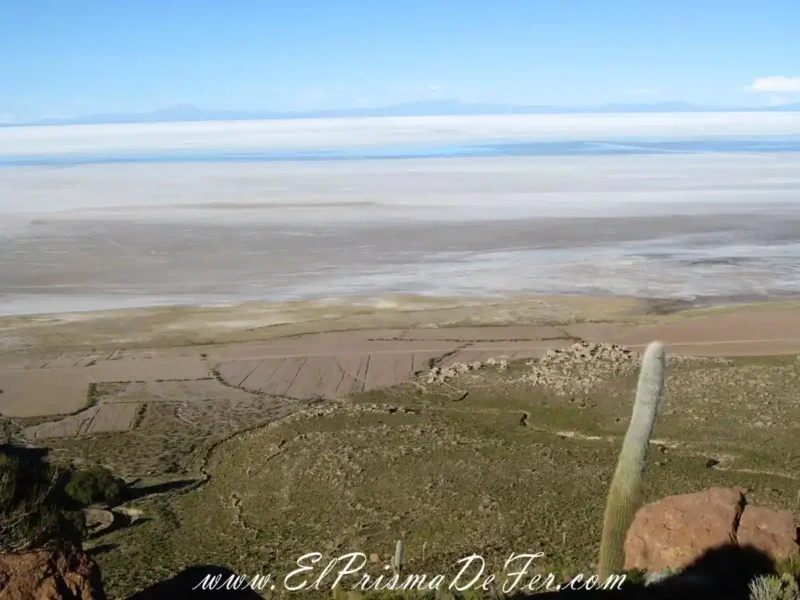Traveling through the Gobi Desert, one of the largest in the world, is a unique experience for those seeking otherworldly places. Stretching between southern Mongolia and northern China, it boasts landscapes ranging from vast steppes to enormous dunes, rock formations, and canyons. It's not an express trip: the distances are long, the infrastructure is limited, and many routes can only be traveled by off-road vehicle with a local driver.
During my journey through the Gobi Desert, I visited iconic sites such as Khongoryn Els Dunes, Yolyn Am Canyon, and the flaming cliffs of Bayanzag. Daily journeys can last several hours, and nights are often spent in traditional gers, basic but charming accommodations. It is a perfect tour to enter the heart of Mongolia, and be part of the ancient Silk Road.
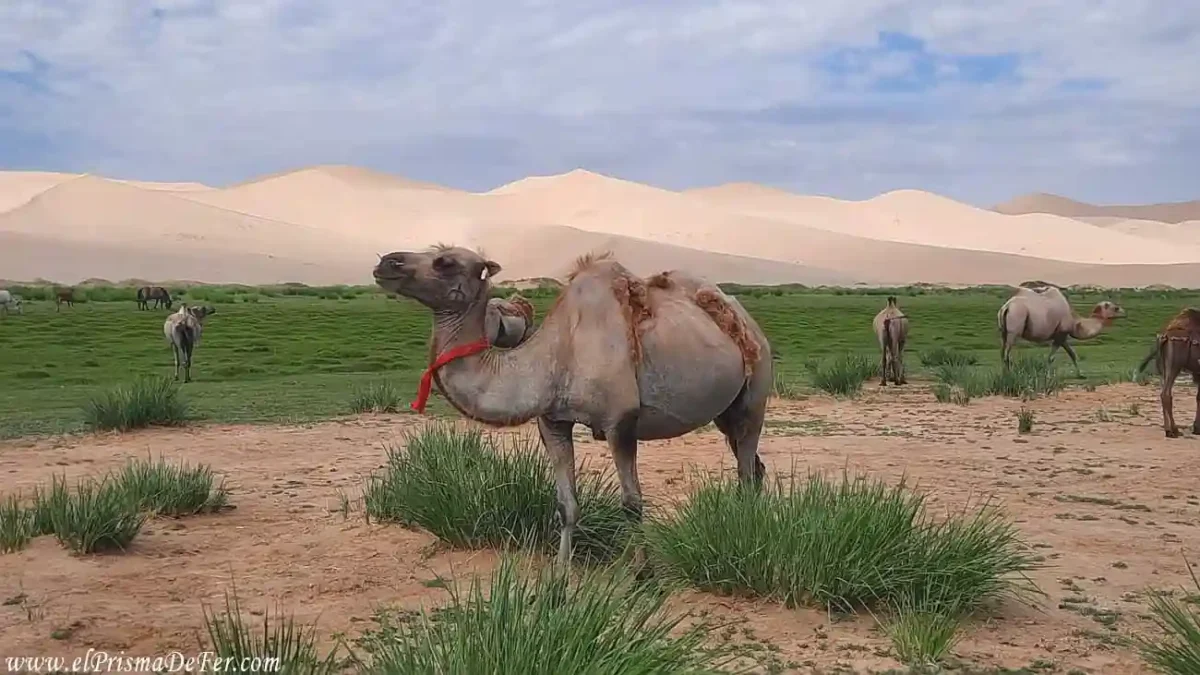

Table of Contents
How to get to the Gobi Desert
The most common starting point for exploring the Gobi Desert in Mongolia is Dalanzadgad, the capital of Ömnögovi Province. It's a small town surrounded by vast, empty expanses, but it serves as a perfect base for organizing your trip. From here, you can contact local drivers and agencies that offer off-road vehicle tours to the desert's main attractions.
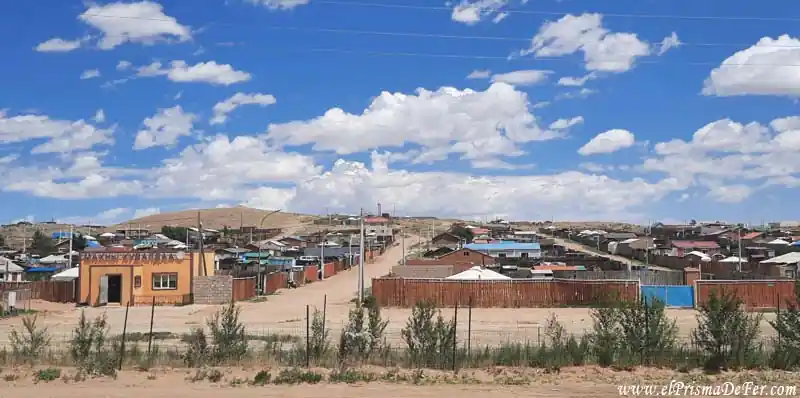
To reach Dalanzadgad from Ulaanbaatar, there are domestic flights that take about an hour, although it's also possible to travel by land, which can take between 8 and 10 hours by bus or private car. The air option is faster and more comfortable, but the road journey allows you to appreciate the changing landscapes of the Mongolian steppes.
By bus to Dalanzadgad
To purchase tickets for the bus connecting Ulaanbaatar to Dalanzadgad, a convenient option is to do so through Tapatrip, a widely used online platform in Mongolia for booking ground transportation. It allows you to check schedules, prices, and secure your seat in advance, avoiding the need to go to the terminal to purchase one.

Once in the city, the entire trip through the Gobi Desert is organized with guides and specialized transportation, as most of the routes are unpaved and unmarked.
Although Dalanzadgad isn't a tourist destination per se, it's worth spending a few hours browsing its small central market, trying the local food at family-run restaurants, or visiting the regional museum, which provides a good introduction to the flora, fauna, and culture of the Gobi. It's also a good place to stock up on supplies and fuel before heading deeper into the desert.
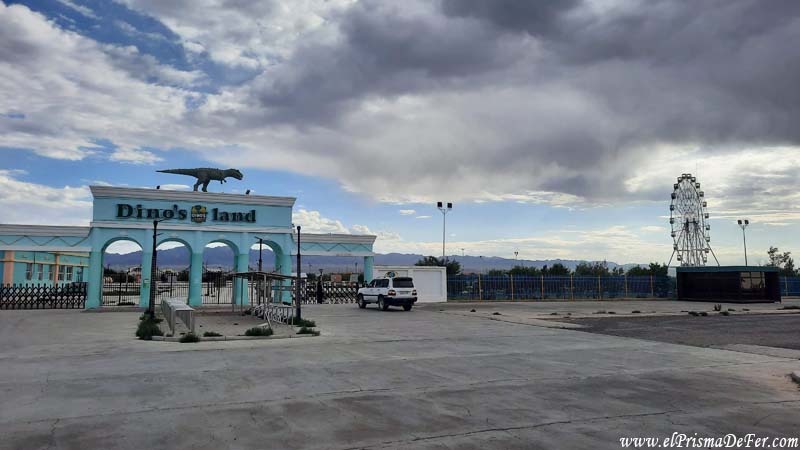
Tips for choosing a tour through the Gobi Desert
Organizing a Gobi trek requires some planning, as the distances are long and the terrain conditions require a 4x4 vehicle and an experienced driver. Most tours depart from Dalanzadgad or Ulaanbaatar and usually include transportation, a guide, accommodation in gers (traditional yurts), and meals.
As for pricing, a 3-day Gobi tour from Dalanzadgad can cost between 100-150 USD per person per day, while a more comprehensive 6-8 day tour departing from Ulaanbaatar is usually around 500-800 USD per person, depending on the season, group size, and comfort level of accommodations. Traveling in a group helps keep costs down, as fuel and a guide are shared.
The ideal tour length depends on how much you want to explore: a shorter trip will allow you to visit the most iconic sites, such as the Khongoryn Els dunes and the Yolyn Am Canyon, while a longer one will include remote areas, dinosaur fossils, and nomadic villages. Before booking, confirm which sites are included in the itinerary, how many hours you drive per day, and what services are covered in the price.
My experience booking a 2-day tour in the Gobi
The tour was organized for me by Chimgee’s Guesthouse in Dalanzadgad. I found it by looking at references on Google Maps. It has a plot of land, a short walk from the bus station, with several gers set up for sleeping. Chimgee, the owner, is very friendly and will personally pick you up at the station to take you to the gers. She will explain the route in detail and agree on the cost of the excursion, should you decide to do so with her.
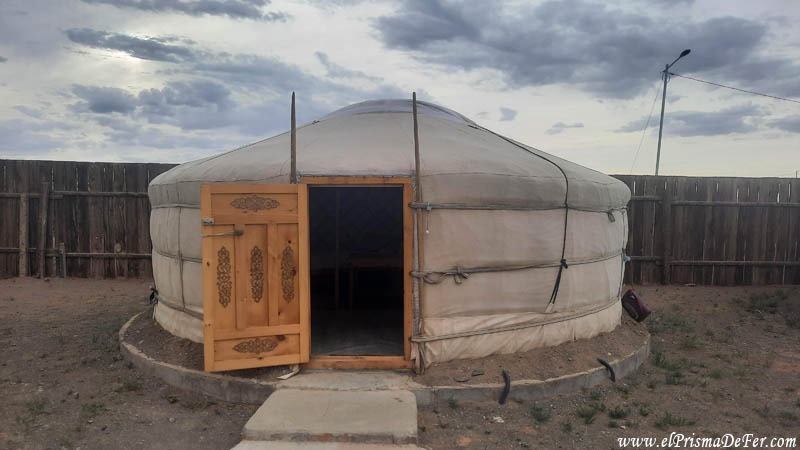
They offer 2 or 3 day tours, with an approximate cost of 100 USD per day. The driver is her husband, and if the group is larger, they can negotiate better prices. My experience was very positive: they fulfilled everything they promised and, in addition, the day after the tour my husband was kind enough to take me to see the Naadam festival in a remote village on the way to the Gobi, a detail that allowed me to live an extra experience at no additional cost.
What to bring on the Gobi tour
Although there is usually a stop at a restaurant for lunch during the trek, and the overnight camps (gers) offer dinner and breakfast, it is highly recommended to bring your own provisions. Water, in particular, is best purchased in Dalanzadgad, where there are large markets and prices are much lower than in remote locations. The same applies to snacks, dried fruit, or cookies, which can be very useful during the long hours of travel between stops. Being prepared ensures that you won't go thirsty or hungry in the vastness of the desert.

Day 1 of the Gobi tour: Yolyn Am Canyon and Khongoryn Els dunes
The first stop of the tour was at the Yolyn Am Valley canyon, located within the Gurvan Saikhan National Park. The vehicle dropped us off at the parking lot, where a short, easy hike begins until we reach the narrowest part of the canyon, where the river freezes completely in winter.
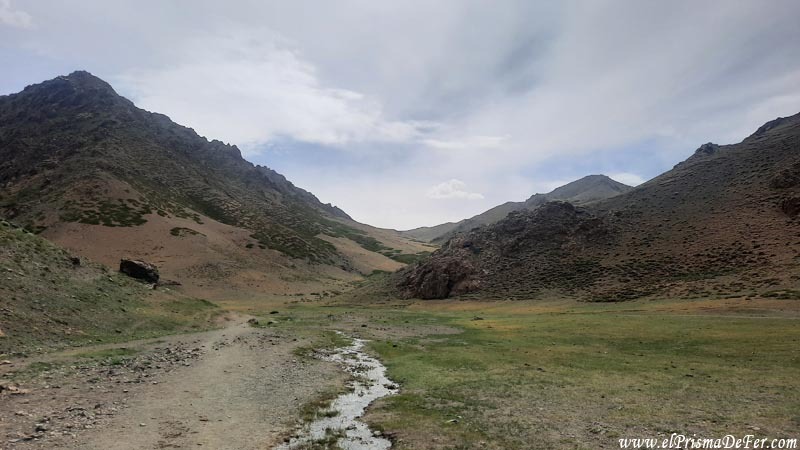
I visited in the middle of July, so there were only small remnants of ice left, nothing too impressive, but the surroundings are still very pleasant to walk around for a while, enjoy the fresh air and stretch your legs before continuing on through the desert.
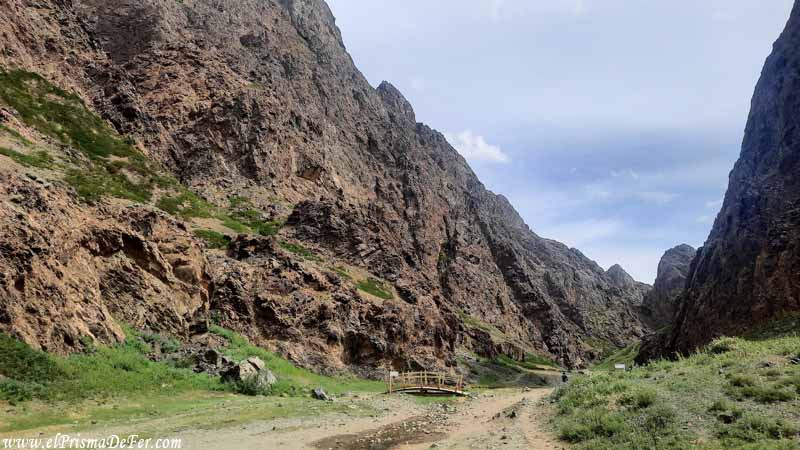
After visiting Yolyn Am Valley and walking to the small stretch of frozen river, we resumed our journey through increasingly arid landscapes.
The second stop of the day was in Bayandali, a village where all tours usually stop for lunch. At this time, the place is quite busy, with travelers and locals mingling at the few available restaurants.
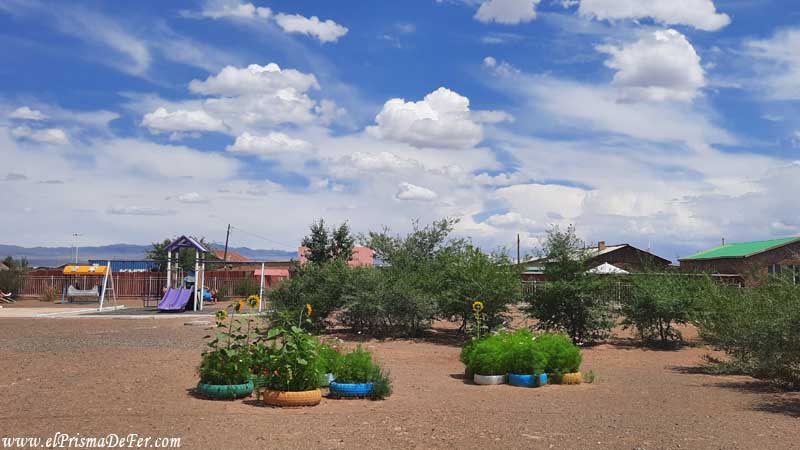
Khongoryn Els Dunes
After another couple of hours on the road, we made another impromptu stop, now in the middle of the desert. There was absolutely no one there, and it was like a perfect introduction to what was to come next: the most spectacular area of the Khongoryn Els dunes. Reaching them is breathtaking; from a distance, they look like mountains of sand rising abruptly from the middle of the steppe.

Before climbing, we passed through the oasis at the foot of the dunes: a green corridor crossed by a river, with camels and horses peacefully grazing. It's a true contrast, a small paradise in the midst of such a hostile environment.
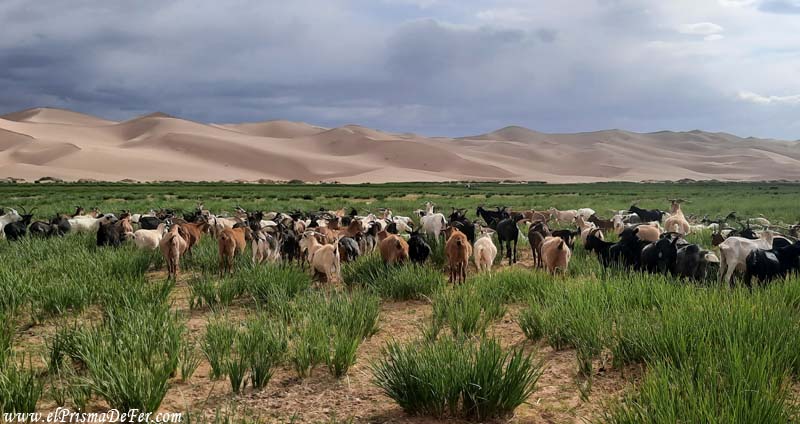
The climb to the highest dune is exhausting; the sand gives way with every step, and the wind suddenly shifts as you reach the top. From the top, the views are otherworldly: the sea of sand stretching to the horizon, and on the other side, the green oasis.
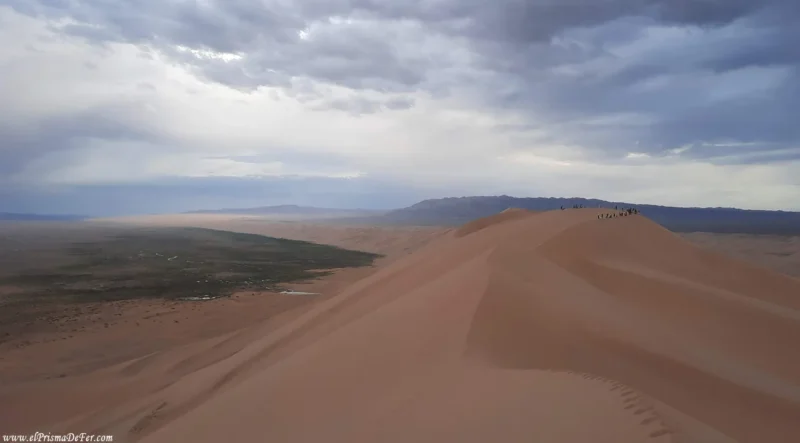
Of course, the highest dune is also where most of the tour groups gather, taking advantage of the opportunity to roll around in the sand as part of the experience. With so many people, it loses some of the charm of the surrounding desolation, but if you step back even a few meters, you'll once again feel the silent immensity that makes the desert so special.
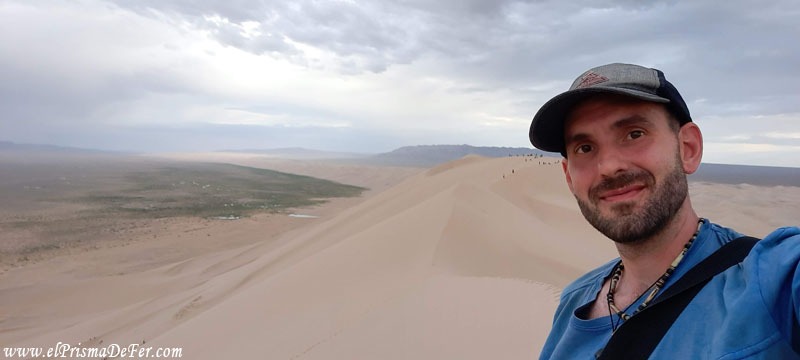
I stayed until I saw the sunset from above, a magical moment with the last rays of the sun dyeing the sand gold.
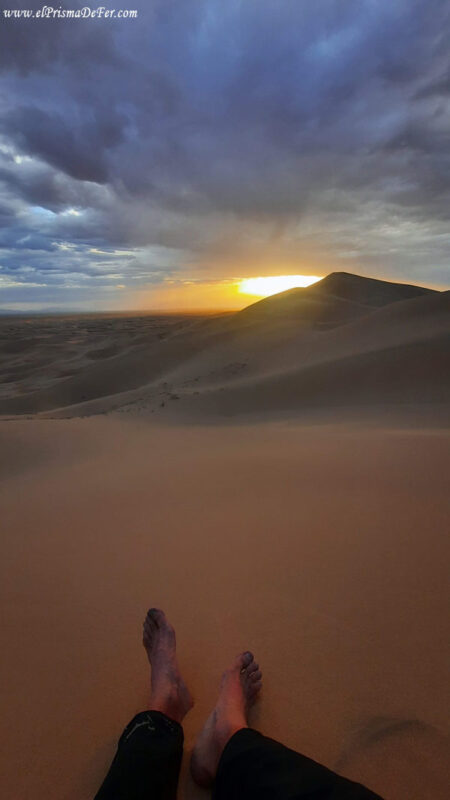
After the quick descent, we head to the ger camp (Mongolian yurts), where you can eat, swim, and rest. If the sky is clear, it's the ideal time to see the stars, but although I wasn't lucky, as it was cloudy, the silence of the night is still felt.
Day 2: Dunes and Flaming Cliffs
In the morning, after breakfast at camp, we returned to a section of the dunes to enjoy the scenery for a while longer, this time almost alone. The tranquility and silence of the desert during those hours gave a completely different feeling than the day before, allowing us to walk among the sand and appreciate the colors and shadows the morning sun casts on the dunes.
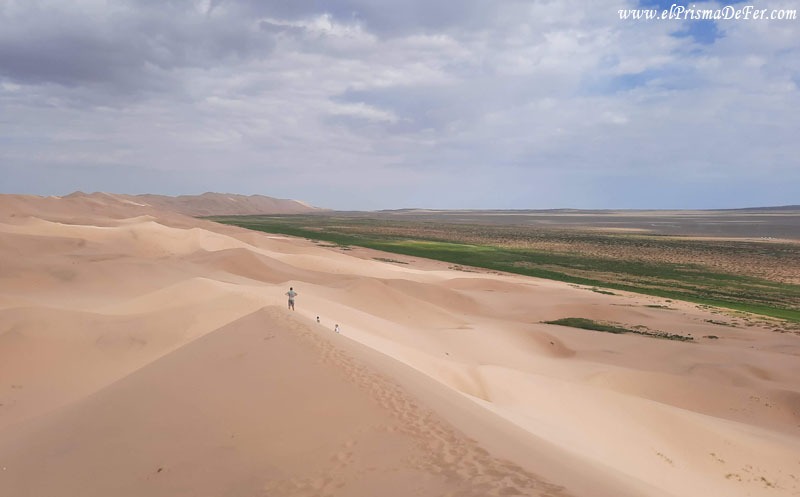
Flaming Cliffs
Afterwards we set off towards Flaming Cliffs (Bayanzag), one of the most iconic places in the Gobi Desert. The road took us through arid landscapes and striking rock formations, while the driver told us a little about the paleontological discoveries in the area.
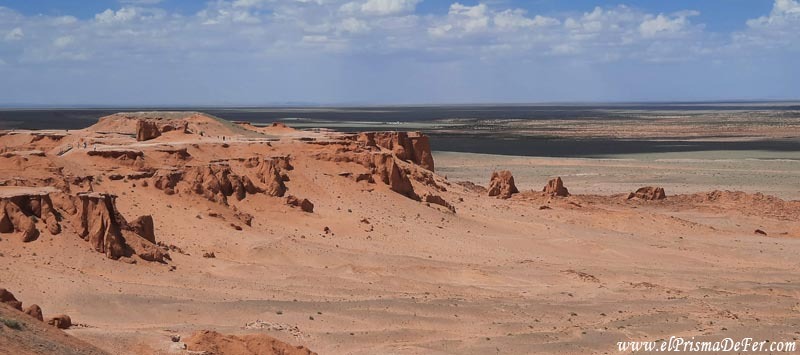
Flaming Cliffs is famous for the dinosaur fossils discovered in the mid-20th century, and for the reddish hue the rocks have, especially at sunrise and sunset. Upon arrival, we were able to walk along the marked trails, observe the eroded sandstone formations, and learn about the geological and paleontological history of the site. Although there are visitors, the area is large enough to explore at a leisurely pace without too much hustle and bustle.
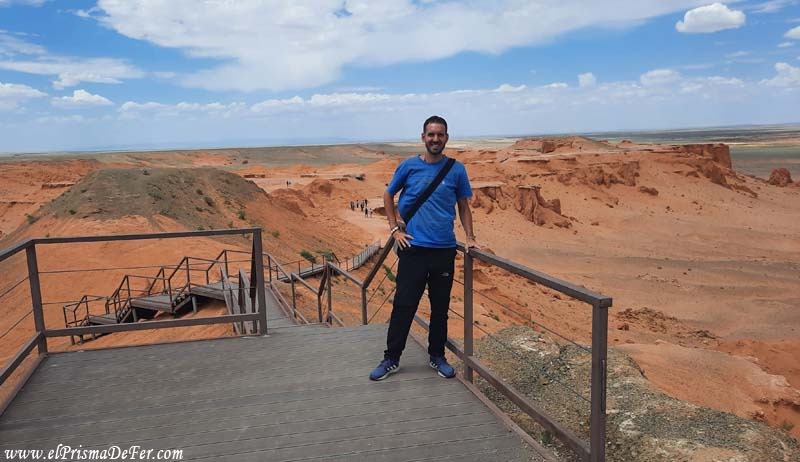
One of the gems I liked the most in the Flaming Cliffs were some camel statues that represent an ancient caravan, remembering that the Silk Road passed through this area. It was a historical detail that added a plus to the experience, connecting the desert landscape with centuries of trade and culture in Mongolia.
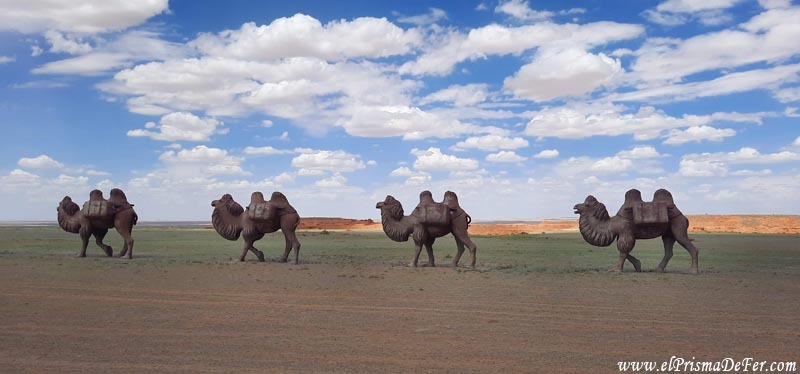
Return to Dalanzadgad
After visiting Flaming Cliffs, we started our return trip to Dalanzadgad, arriving in the afternoon. I took the opportunity to walk around the small town, explore its streets and markets, and try some local food. Dalanzadgad, although modest, offers a pleasant place to stretch your legs after the desert and recharge your batteries.
That day also served as preparation for the following day, as we would return to Bayandali to witness the opening of the Naadam festival. It was a peaceful end to an intense day, combining the desert experience with the routine and local life of a Mongolian city.
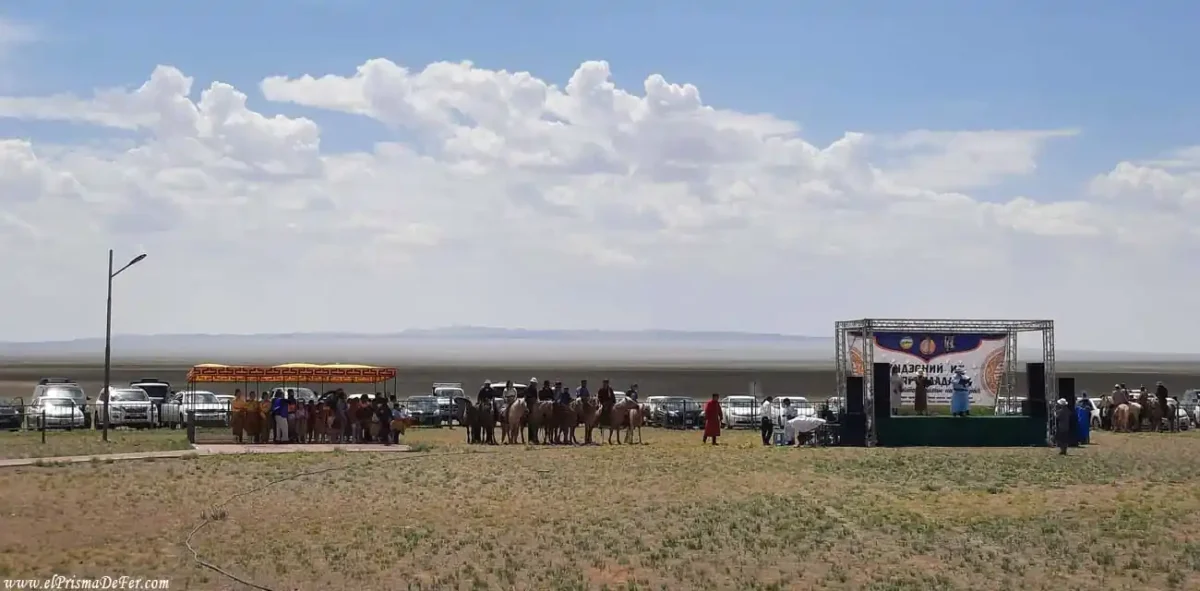
How to see the Naadam Festival in Inner Mongolia

How the Gobi Desert differs from other deserts
I've been lucky enough to visit several deserts, and I must say the Gobi was one of my favorites so far. Here's why:
- Sahara (Merzouga, Morocco): In Merzouga, the dunes are very close to the town, with tourist infrastructure, lodges a stone's throw away, and ATVs shuttling in and out. The Gobi, on the other hand, is much more desolate and remote; the Khongoryn dunes are far from any town, creating a sense of vastness and solitude that's hard to replicate.
- Thar (Jaisalmer, India): The Thar is dotted with villages and busy roads. Its landscapes have a strong cultural component, but the vastness is less than in the Gobi, where the open steppe and wide skies dominate the panorama.
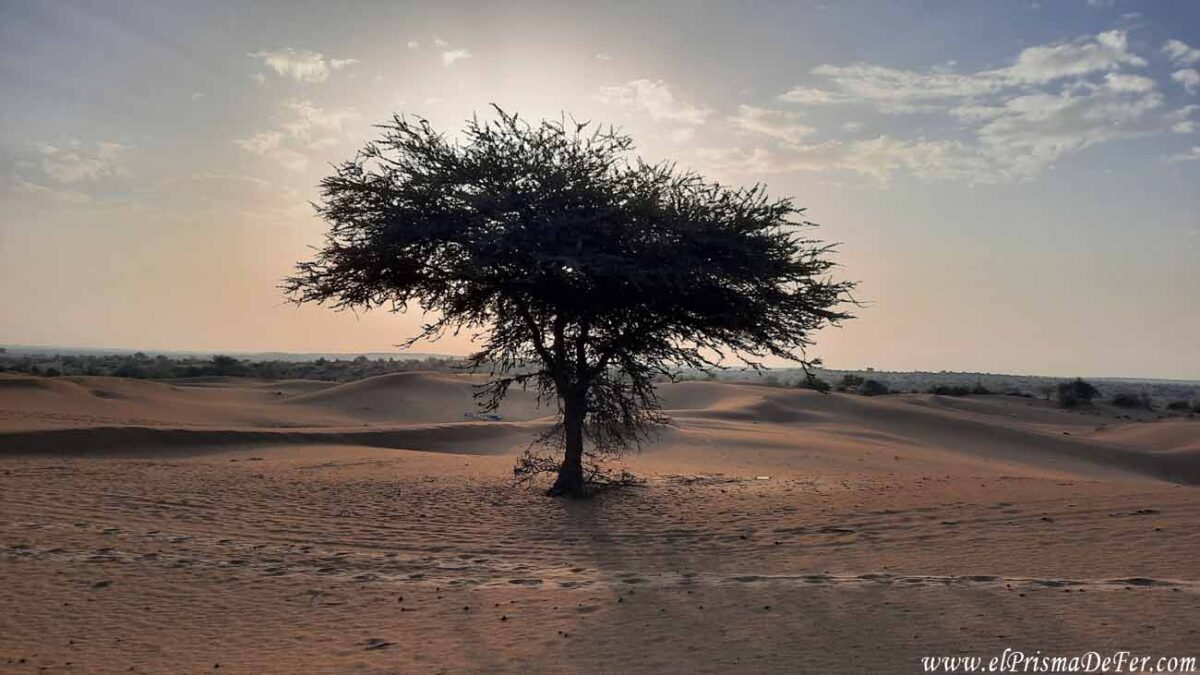
How to visit the Thar Desert from Jaisalmer, India, on your own
- Wadi Rum (Jordan): Wadi Rum is a rocky desert with dramatic formations, reddish colors and well-defined paths. The Gobi, in contrast, combines giant dunes with green oases and rocky valleys, offering a more diverse landscape in terms of color contrasts and ecosystems.
- Salar de Uyuni (Bolivia): Uyuni impresses with its flat, white expanse of salt, almost surreal. The Gobi is not flat; it has a marked relief of dunes, hills, and cliffs, and its sense of desolation is distinct, with wind and moving sand, as well as oases and wildlife.
In short, the Gobi stands out for its remoteness, variety of landscapes, and the feeling of being in a virtually untouched territory, something that makes it unique compared to other popular deserts in the world.
What is the best time to go to the Gobi Desert?
The Gobi's climate is extreme and changeable. In summer, daytime temperatures can exceed 35 °C, but at night they drop dramatically, even reaching -10 °C. The sky is generally clear, but the wind can whip up sudden sandstorms, especially in open areas.

In winter, the cold is intense, with minimum temperatures below -30 °C. Traveling in spring or autumn is generally more pleasant, although it's always a good idea to be prepared for sudden changes in temperature and weather conditions.
Reflections on the 2-Day Gobi Desert Tour
I loved the tour through the Gobi Desert, and for me, it's one of the most impressive deserts I've ever seen. Its combination of absolute desolation, with no towns or cities nearby, along with the green oases and the enormous Khongoryn dunes, makes it truly unique. The feeling of vastness and solitude that you feel when you get away from the busier areas is unforgettable.
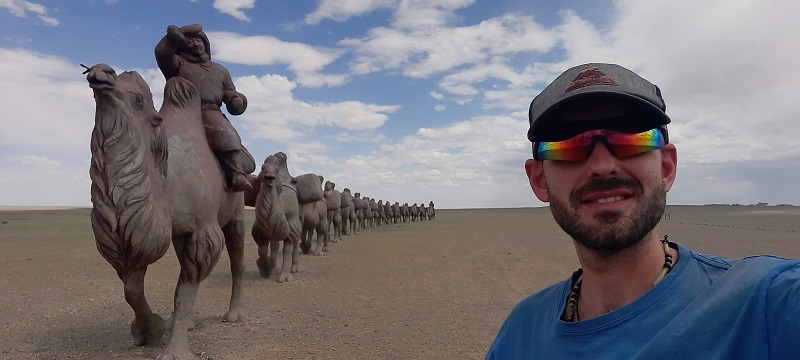
While the other stops on the tour, such as Yolyn Am Valley and Flaming Cliffs, are beautiful and provide variety, the core of the experience is the dunes. I would have liked to spend one more day exploring the dunes, enjoying the scenery, the wind, and the seemingly endless skies, to fully absorb the magic of the place.
Support The Prism of Fer!
Your support helps me continue creating free content on the blog. Thank you so much!


